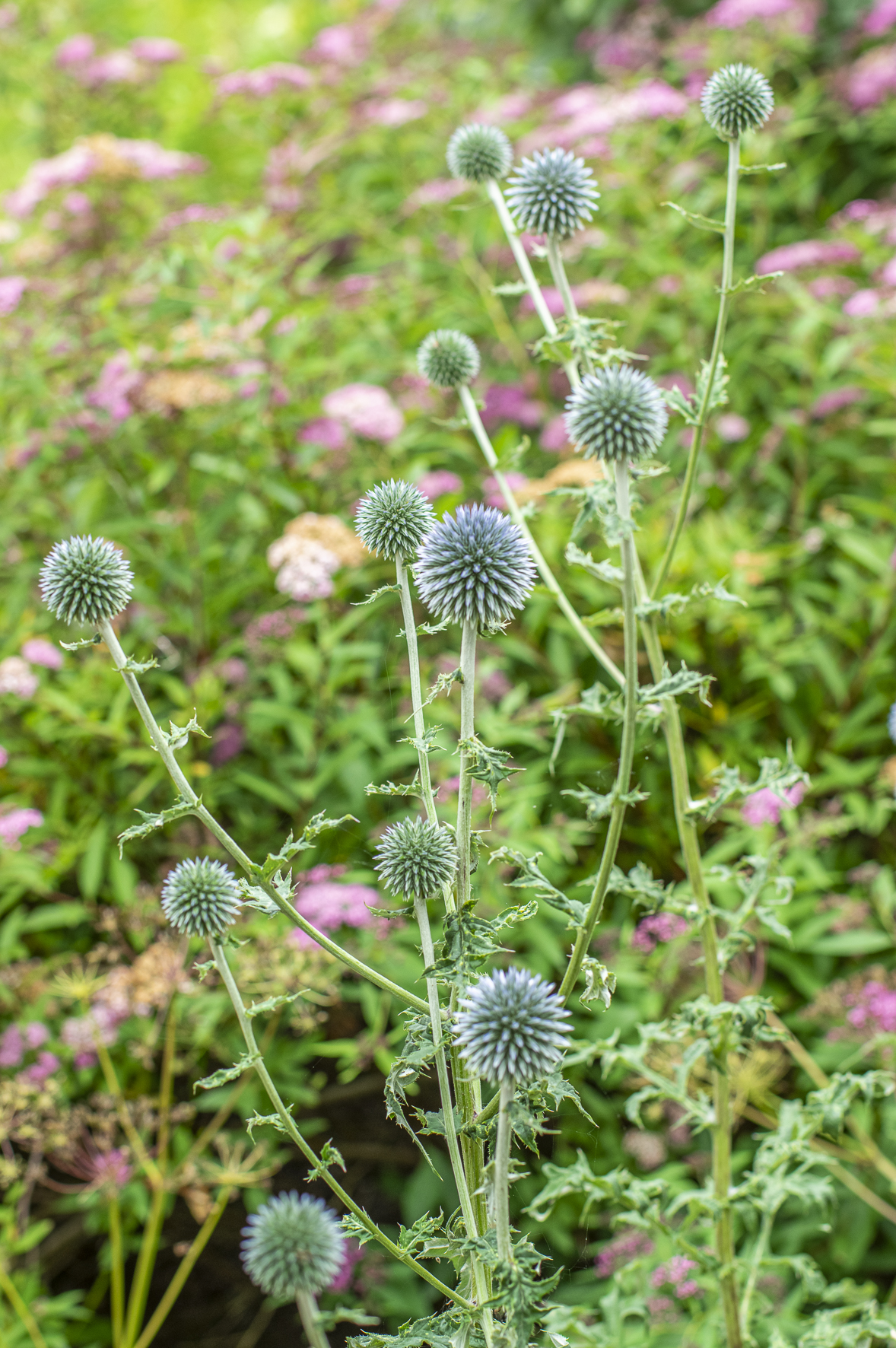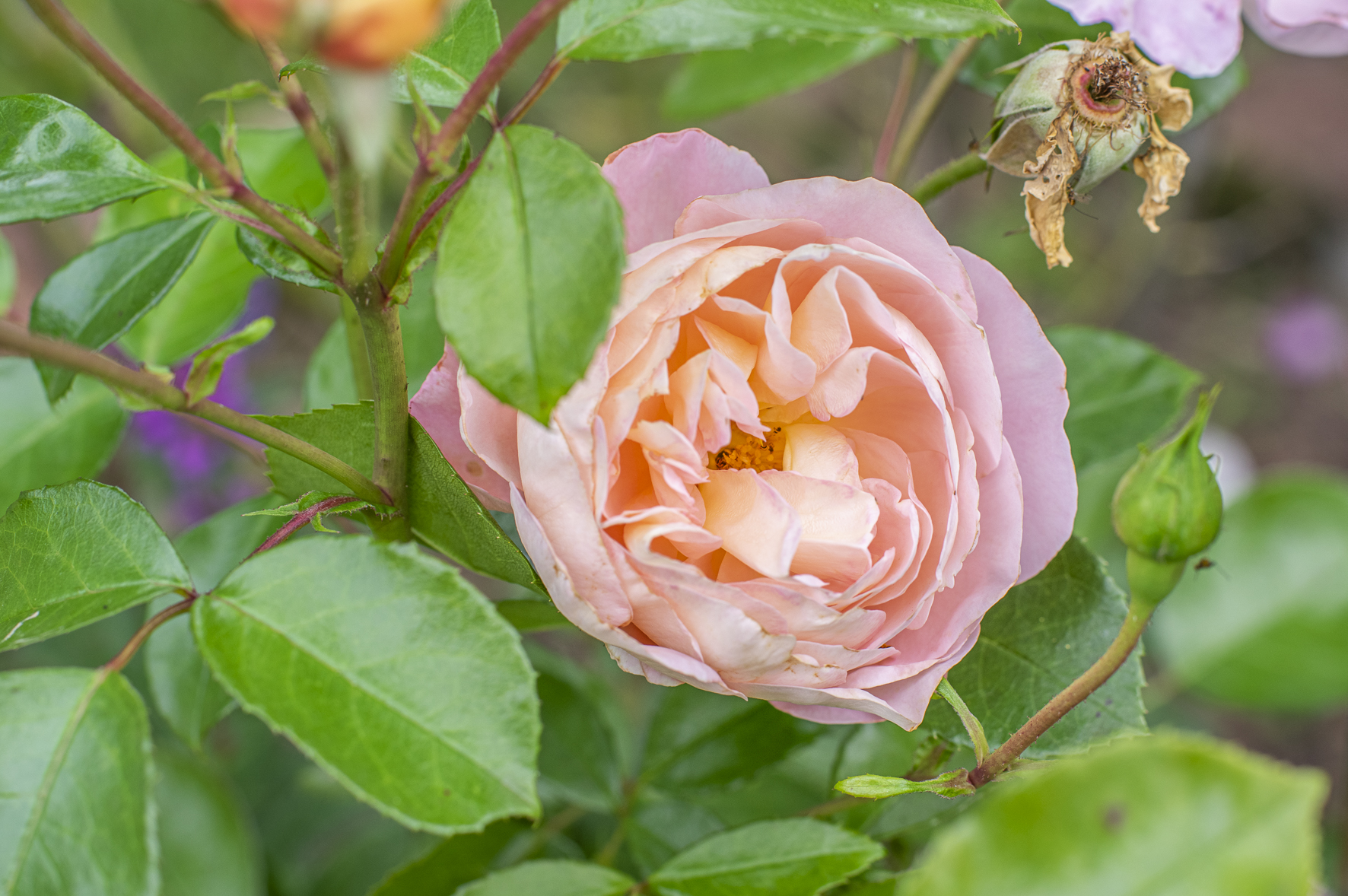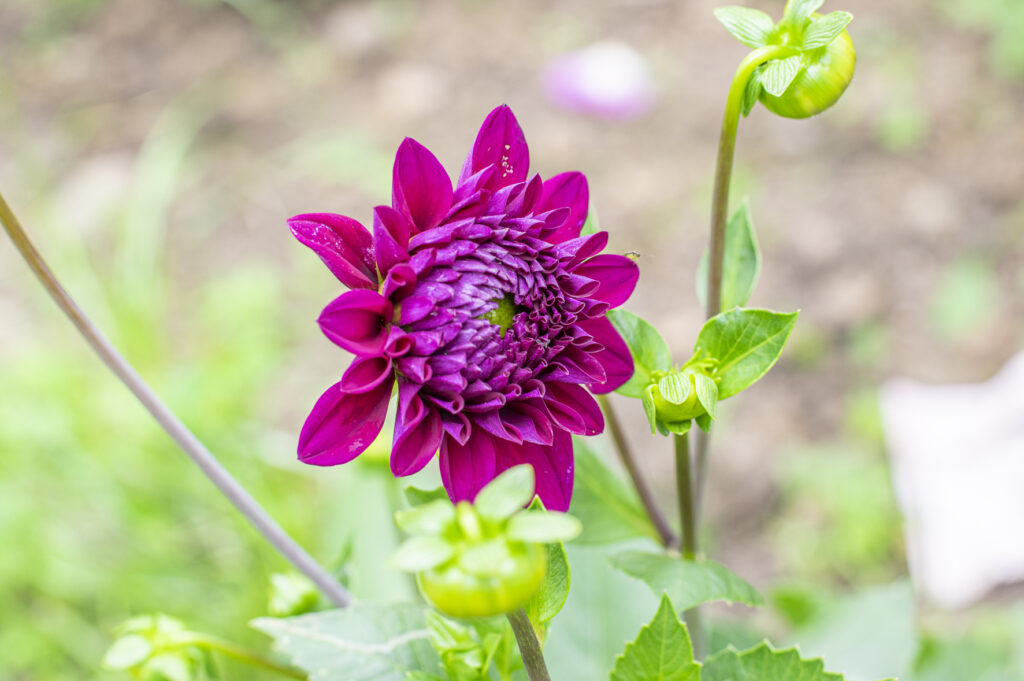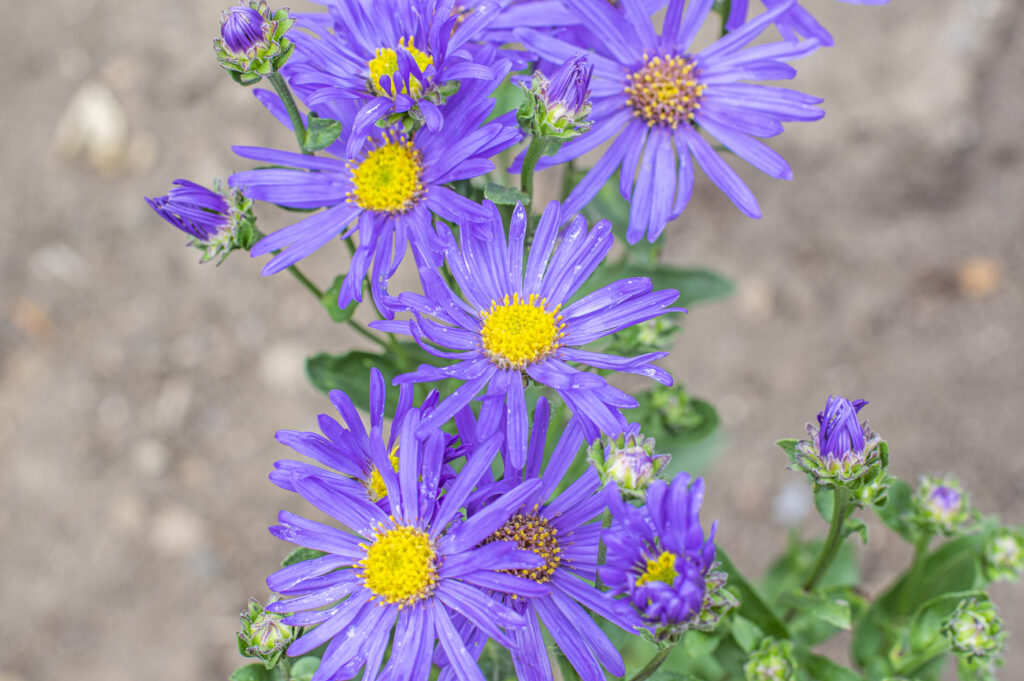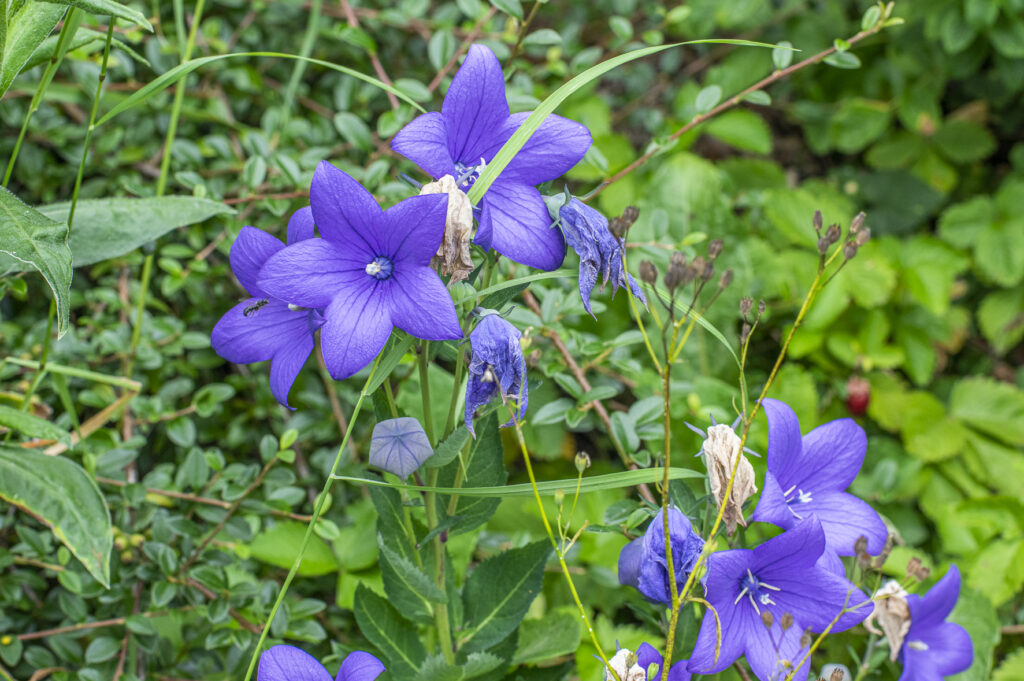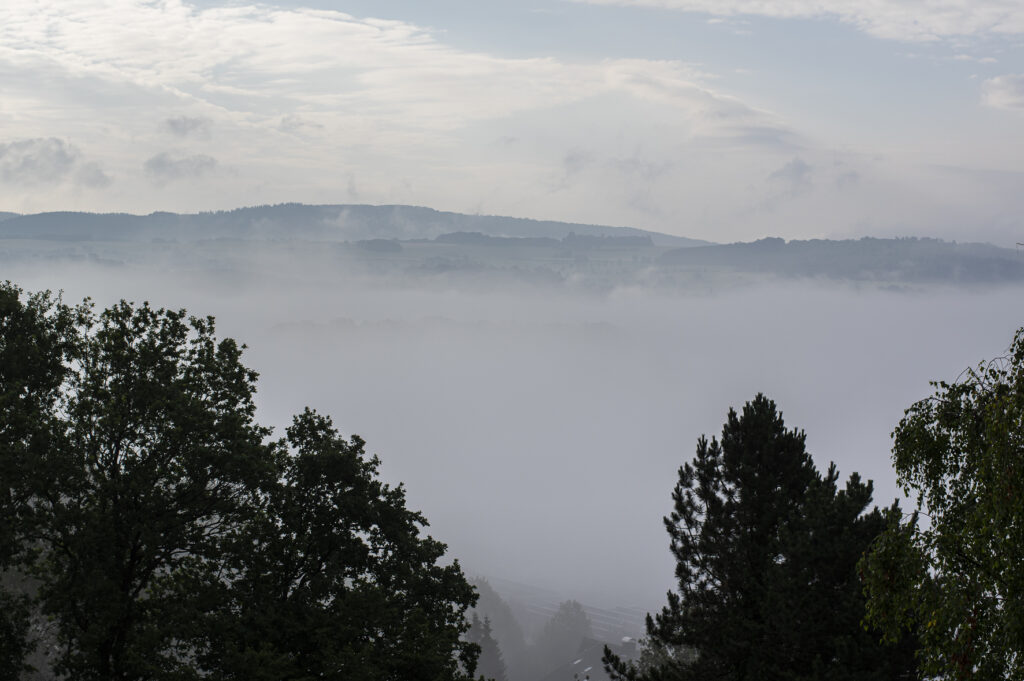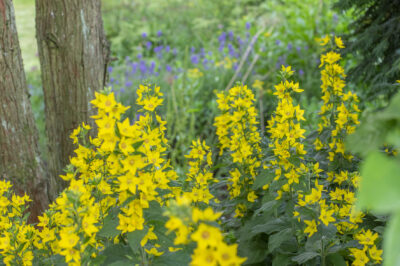While hortensia and roses are almost over in moderate climate conditions down in the valleys of our region, they are on pole position in the rough climate of our hassia hill cottage. However, I love my late bloomers.
Our floribunda came to life in spring with diplocarpon rosae. I did not cut her down as I should have done and felt guilty while her leaves turned yellow and brown. At least I collected the ill fallen leaves from stem and ground. Two days ago I heard a quiet “Come on. I’m not a primrose” when she surprisingly started spreading colour and odor into this years mixed summer weather.
While the first flush of french hydrangea is almost over in valleys villages it slowly comes to live on our hill slope. Hopefully she’s still growing. Late frosts in spring kept her down for now. The different sorts of dahlias I preserved over winter in our winter garden bend their first flowers and buds into the rear sun.
The aster amellus “Blue King” I planted last fall from three tiny pots are coming into bloom these days. She’s normally flowering from June onwards. The soil around the three of them is still bare. Hopefully they’re going to form a unity next year.
Wir wollen im Garten ein freiwilliges Lächeln der Natur, kein ihr allzu mühsam Abgerungenes.
Karl Förster (1874 – 1970)
Despite gentle rain grounds and soils still do miss water in deeper areas. I planted a hibiscus syriacus “Woodbridge” but it seems he’s not going to survive in our loamy to sandy grounds. It’s the second one I try to cultivate on our hillside and it is sad to see them dy despite watering.
The platycodon grandiflorus however seems to enjoy the drizzle and sprinkle now and then. I never saw her in our garden in such full bloom.
Althoug with most of summer before us, misty mornings which usually occur from mid august onward in this area, spread falls calling over villages and hills.

